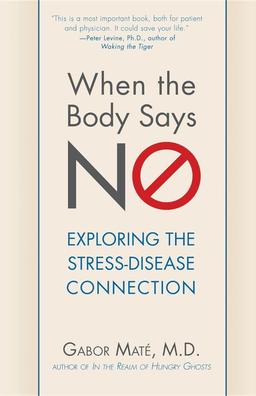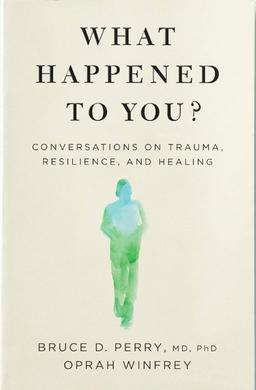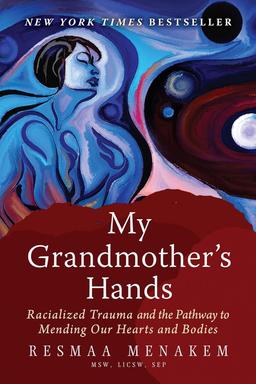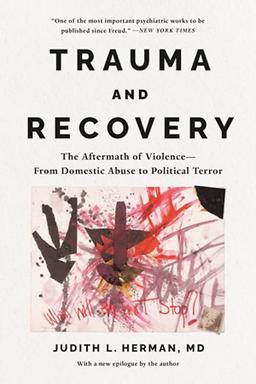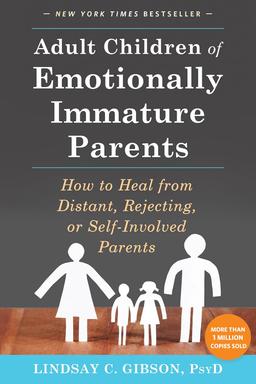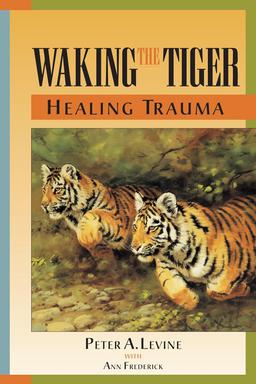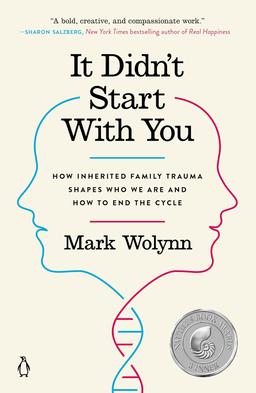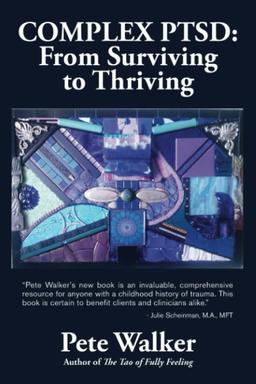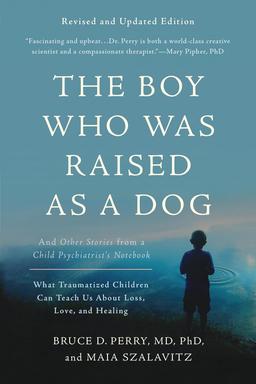Have you finished ‘The Body Keeps the Score’ and are yearning for more books on trauma and recovery? You’re in the right place. Here’s a list of 12 non-fiction books like this New York Times bestseller that provide deep insights into trauma and offer practical paths to healing.
Key takeaways
Understanding trauma requires recognizing its deep impact on both mental health and the body, as illustrated by Bessel van der Kolk in ‘The Body Keeps the Score’.
Numerous books, like ‘The Boy Who Was Raised as a Dog’ and ‘What Happened to You?’, offer unique insights and practical strategies for healing from trauma.
Embracing a holistic approach to trauma recovery—including emotional, physical, and societal aspects—can lead to profound healing and resilience.
What is ‘The Body Keeps the Score’ about?
‘The Body Keeps the Score’ by Bessel van der Kolk explores the intricate connections between trauma, the brain, and the body. Van der Kolk illustrates how traumatic experiences can lead to significant alterations in emotional and cognitive functioning, profoundly disrupting an individual’s life. The book emphasizes the necessity for trauma survivors to feel safe in their bodies to facilitate healing and recovery, highlighting the importance of fostering self-regulation skills to manage emotional responses effectively.
Integrating neuroscience research with personal accounts from therapy, Van der Kolk highlights effective trauma treatment methods and promotes various therapeutic practices such as yoga and mindfulness, endorsed by the world’s leading experts. These practices assist survivors in regaining bodily awareness and a sense of safety, which are crucial for recovery.
Understanding the profound effects of trauma on the mind and body equips readers to better navigate their healing journeys.
Best 12 books similar to ‘The Body Keeps the Score’
For those who found solace and understanding in ‘The Body Keeps the Score’, there are other stories that offer similar insights into the complexities of trauma and healing. Each of these texts provides a unique angle on how to process and recover from traumatic experiences, whether they stem from childhood, systemic issues, or personal loss.
The following sections explore twelve bestselling books that, similar to Van der Kolk’s work, delve into the human experience of trauma and provide practical strategies for healing. From renowned child psychiatrists to insightful memoirs, these books are invaluable resources for anyone on the path to recovery.
Certainly! Here's the text for "Man's Search for Meaning" as the first book on the list:
1. ‘Man's Search for Meaning’ by Viktor E. Frankl
‘Man's Search for Meaning’ is a profound exploration of human suffering, resilience, and the quest for meaning, written by psychiatrist Viktor E. Frankl. Drawing on his harrowing experiences as a Holocaust survivor, Frankl delves into the psychological journey of those who endured the horrors of concentration camps. He argues that even in the most brutal conditions, life holds potential meaning, and it is this search for meaning that sustains individuals through unimaginable suffering.
‘Man's Search for Meaning’ is not just a memoir of survival but a philosophical treatise on how we can endure life’s greatest challenges by finding significance in our experiences.
Similarities between the books:
Explores the psychological impact of trauma and suffering.
Emphasizes the importance of finding meaning as a path to recovery.
Highlights the resilience of the human spirit in overcoming extreme adversity.
2. ‘The Myth of Normal: Trauma, Illness, and Healing in a Toxic Culture’ by Gabor Maté M.D.
In ‘The Myth of Normal,’ Dr. Gabor Maté explores the profound links between trauma, illness, and societal norms. Maté illustrates how unresolved trauma, such as separation and abuse, can lead to physical illnesses like autoimmune disorders. He emphasizes that true healing requires addressing emotional health and building supportive social connections rather than merely focusing on physical symptoms.
The book also delves into the societal implications of trauma, suggesting that broader community support is essential for individual healing. Maté argues that suppressing emotions and prioritizing social acceptance are common traits among those with chronic illnesses. Acknowledging historical trauma and promoting collective healing, Maté offers a pathway for both personal and societal transformation.
Similarities between the books:
Examines the connection between trauma, illness, and societal norms.
Advocates for addressing both emotional and physical aspects of trauma.
Emphasizes the importance of collective healing in addition to personal recovery.
3. ‘When the Body Says No: Understanding the Stress-Disease Connection’ by Gabor Maté M.D.
In ‘When the Body Says No’, Dr. Gabor Maté delves into the profound connection between chronic stress and physical illness. Maté argues that emotional repression, particularly of negative feelings, significantly contributes to higher disease susceptibility. Chronic stress, often unrecognized, is a major factor in the development of physical ailments, as the body communicates what the mind cannot.
Maté critiques traditional therapeutic methods for neglecting the physical aspects of trauma. He advocates for therapies that allow the body to release pent-up energy from traumatic experiences, emphasizing a holistic approach to healing.
The book is a compelling exploration of how our emotional lives deeply influence our physical health, and it offers insights into how we can better manage stress and its impacts.
Similarities between the books:
Explores the connection between trauma, stress, and physical illness.
Advocates for a holistic approach to healing, integrating both emotional and physical aspects.
Challenges traditional therapeutic methods that overlook the body's role in trauma.
4. ‘What Happened to You?’ by Oprah Winfrey and Bruce D. Perry
What Happened to You?’ by Oprah Winfrey and Bruce D. Perry centers around understanding the impact of past trauma on current behavior. The book’s central question, “What happened to you?”, shifts the focus from what is wrong with an individual to what they have experienced, promoting healing through understanding.
Through personal anecdotes and insightful discussions, Winfrey and Perry illustrate how recognizing and understanding past trauma can lead to significant recovery. The book’s overall message is that healing involves delving into our past experiences and comprehending their impact on our present behaviors.
This approach fosters compassion and self-awareness, crucial elements in the journey towards healing.
Similarities between the books:
Shifts the focus from what is wrong with an individual to what they have experienced.
Promotes understanding and compassion as essential elements of healing.
Emphasizes the importance of exploring past trauma to foster recovery.
5. ‘My Grandmother's Hands: Racialized Trauma and the Mending of Our Bodies and Hearts’ by Resmaa Menakem
Resmaa Menakem’s ‘My Grandmother’s Hands’ examines the deep connection between racism and trauma, highlighting its significance in both individual and collective healing. Menakem emphasizes the importance of physical healing to counter the effects of white supremacy and systemic racism. The book delves into how societal expectations and mistreatment affect the Black community, adding a crucial dimension to our understanding of trauma.
Addressing racialized trauma, Menakem offers a unique perspective on healing that includes both personal and societal dimensions. The book is a powerful call to recognize and address the traumas perpetuated by racism, advocating for a holistic approach to healing that includes the body, mind, and community.
Similarities between the books:
Addresses the societal and individual impacts of trauma.
Emphasizes the need for healing both the mind and body.
Focuses on the trauma of marginalized communities and the effects of systemic racism.
6. ‘Trauma and Recovery: The Aftermath of Violence’ by Judith Herman
Judith Herman’s ‘Trauma and Recovery’ is a seminal work that explores the complex nature of trauma and its impact on individuals. Herman delves into the psychological aftermath of various forms of violence, including domestic abuse, political terror, and sexual assault. She emphasizes the importance of understanding trauma in a societal context, recognizing that recovery is not just a personal journey but a collective one.
The book outlines a three-stage model of recovery: safety, remembrance and mourning, and reconnection. Herman argues that establishing safety is the first crucial step, as it allows survivors to begin the process of healing without the constant threat of danger. Remembrance and mourning involve confronting and processing traumatic memories, while reconnection focuses on rebuilding relationships and finding a new sense of purpose.
Similarities between the books:
Discusses the societal and individual dimensions of trauma.
Outlines a structured approach to recovery, starting with establishing safety.
Highlights the importance of processing traumatic memories and rebuilding relationships.
7. ‘Adult Children of Emotionally Immature Parents: How to Heal from Distant, Rejecting, or Self-Involved Parents’ by Lindsay C. Gibson
Lindsay C. Gibson’s ‘Adult Children of Emotionally Immature Parents’ delves into the lasting impact of being raised by emotionally immature parents. The book emphasizes the importance of recognizing emotional immaturity in parents and its effects on their children. Gibson offers practical strategies for building healthier emotional boundaries and addressing the challenges of forming intimate relationships.
The text discusses the concept of ‘reparenting’, guiding individuals to reconnect with their emotions and foster healing. By providing insights into how adult children can address and heal from their upbringing, Gibson’s book serves as a valuable guide for those seeking to overcome the effects of emotional neglect and rejection.
Similarities between the books:
Explores the long-term effects of emotional neglect on children.
Offers practical strategies for setting emotional boundaries and healing.
Focuses on the importance of reconnecting with one's emotions to foster recovery.
8. ‘Waking the Tiger: Healing Trauma’ by Peter A. Levine with Anne Frederick
In ‘Waking the Tiger: Healing Trauma’, Peter A. Levine draws on his extensive clinical experience and observations of animal behavior to explore trauma healing. Levine’s insights reveal practical strategies for dealing with trauma by analyzing how animals in nature respond to traumatic events. This unique approach provides a fresh perspective on understanding and addressing human trauma.
Although the book is more focused on theory than practical tools, it offers valuable insights into the mechanisms of trauma and healing. Levine’s work emphasizes the importance of allowing the body to process traumatic experiences, offering a compelling argument for a more embodied approach to trauma therapy.
Similarities between the books:
Emphasizes the body's role in processing trauma.
Draws insights from animal behavior to inform trauma therapy.
Advocates for a more embodied approach to healing trauma.
9. ‘It Didn't Start With You: How Inherited Family Trauma Shapes Who We Are and How to End the Cycle’ by Mark Wolynn
Mark Wolynn’s ‘It Didn’t Start With You’ explores the concept of inherited family trauma and its impact on individuals. Wolynn emphasizes that unresolved issues can manifest in descendants, affecting their mental and emotional health. The book provides self-inventories and tools for self-discovery, helping readers understand their family history and its influence on their present lives.
Wolynn introduces the concept of a ‘Core Language Map’ to trace and understand the origins of inherited trauma. Acknowledging and addressing these deep-seated issues allows individuals to break the cycle of trauma and promote healing across generations. The book offers a powerful framework for understanding and overcoming the legacies of family trauma.
Similarities between the books:
Explores the concept of inherited trauma and its impact on individuals.
Offers tools for understanding and addressing family trauma.
Emphasizes breaking the cycle of trauma for future generations.
10. ‘Complex PTSD: From Surviving to Thriving’ by Pete Walker
'Complex PTSD: From Surviving to Thriving’ by Pete Walker focuses on the intricate dynamics of complex trauma and attachment theory. Walker explains how conflicts between the needs for attachment and authenticity can lead to a fragmented sense of self. The book details how attachment issues can lead to emotional dysregulation and trauma responses.
Healing from complex PTSD involves reconnecting with repressed emotions and accepting all parts of oneself rather than solely focusing on socially acceptable traits. Walker’s approach integrates psychotherapy techniques, emphasizing the importance of recognizing and moving through discomfort as part of the healing process.
The book reveals practical strategies for those struggling with complex trauma, offering practical strategies for recovery.
Similarities between the books:
Focuses on the dynamics of complex trauma and attachment theory.
Highlights the importance of reconnecting with repressed emotions.
Offers practical strategies for healing and integrating all parts of oneself.
11. ‘The Boy Who Was Raised as a Dog’ by Bruce D. Perry and Maia Szalavitz
‘The Boy Who Was Raised as a Dog’ explores the devastating effects of trauma on children’s minds and their subsequent recovery. Child psychiatrist Bruce D. Perry and journalist Maia Szalavitz illustrate how early childhood trauma can significantly alter psychological development. Through detailed case studies, such as that of a girl named Sandy who experienced dissociation and hyperarousal, the book underscores the importance of controlled therapeutic reenactment for healing.
Perry’s therapeutic approach involves allowing traumatized children to regain control by reenacting aspects of their traumatic experiences in a safe environment. This method helps children process ordinary stimuli as safe, reducing prolonged stress responses and fostering recovery.
The book is a powerful testament to the resilience of children and the critical role of therapy in their healing journeys.
Similarities between the books:
Focuses on the impact of trauma on the mind and body.
Emphasizes the importance of a safe environment for healing.
Highlights the resilience of individuals, particularly children, in overcoming trauma.
12. ‘Heavy: An American Memoir’ by Kiese Laymon
Kiese Laymon’s ‘Heavy: An American Memoir’ eloquently explores themes of identity, trauma, and resilience. Narrated as a letter to his mother, Laymon reflects on his trauma growing up as a Black man in America. He delves into the impact of food insecurity on his self-image and emotional health, linking his eating habits to deeper emotional struggles.
Education is presented as a saving grace, with Laymon’s mother emphasizing its importance despite their financial hardships. The memoir illustrates Laymon’s internal conflict about his identity, especially in predominantly White spaces during his education. His narrative provides a poignant look at personal trauma and the resilience needed to overcome it.
Similarities between the books:
Explores the intersection of trauma, identity, and resilience.
Reflects on the impact of societal issues, such as racism and food insecurity, on personal trauma.
Highlights the role of education and self-awareness in overcoming trauma.
Read more books like ‘The Body Keeps the Score’ with Headway
For individuals with busy lives and a desire for personal and professional growth, Headway offers a practical self-help solution. This app provides concise summaries of must-read books, including many on trauma and personal growth. With Headway, you can explore books like ‘The Body Keeps the Score’ and others that offer profound insights and practical strategies for healing.
Whether you’re interested in ‘The Choice’ by Dr. Edith Eva Eger, which focuses on resilience, or ‘How to Do the Work’ by Dr. Nicole LePera, which provides a proven framework to break bad habits and atomic habits, Headway makes it easy to gain knowledge on the go.
Join Headway today and continue your journey towards healing and self-discovery.
Summary
Understanding trauma and its impacts on the mind and body is crucial for healing. ‘The Body Keeps the Score’ opens the door to this understanding, but many other books offer valuable insights and strategies. From childhood trauma to societal impacts, the twelve books highlighted in this post provide a comprehensive guide for anyone looking to deepen their understanding and foster recovery.
Remember, healing is a journey that involves understanding past experiences, building supportive connections, and embracing all parts of oneself. By exploring these books, you are taking important steps towards recovery. Continue to educate yourself, seek support, and embrace the healing process with compassion and determination.
Frequently Asked Questions
What is ‘The Body Keeps the Score’ about?
‘The Body Keeps the Score’ reveals how trauma affects both our mind and body, emphasizing that true healing requires a sense of safety and understanding. It's a powerful reminder that recovery is possible through effective treatments.
Are there other books similar to ‘The Body Keeps the Score’?
Absolutely! You can explore ‘The Boy Who Was Raised as a Dog’, ‘When the Body Says No’, and ‘Heavy: An American Memoir’ for more insights into trauma and healing. Dive into these powerful narratives to enrich your understanding and journey of recovery.
How does ‘When the Body Says No’ relate to trauma?
‘When the Body Says No’ highlights that trauma can manifest as physical illness due to chronic stress and emotional repression. Embracing holistic healing and addressing these emotions is crucial for overall well-being.
What is the central message of ‘What Happened to You?’ by Oprah Winfrey and Bruce D. Perry?
The central message of ‘What Happened to You?’ is that healing begins when we shift our focus from questioning what is wrong with someone to exploring their experiences and past trauma. Embracing this perspective fosters empathy and promotes true understanding and recovery.
How can Headway help in learning about trauma and healing?
Headway can significantly boost your understanding of trauma and healing by providing quick summaries of key books, allowing you to learn and implement practical strategies even in a busy schedule. Dive in and take charge of your healing journey today!



